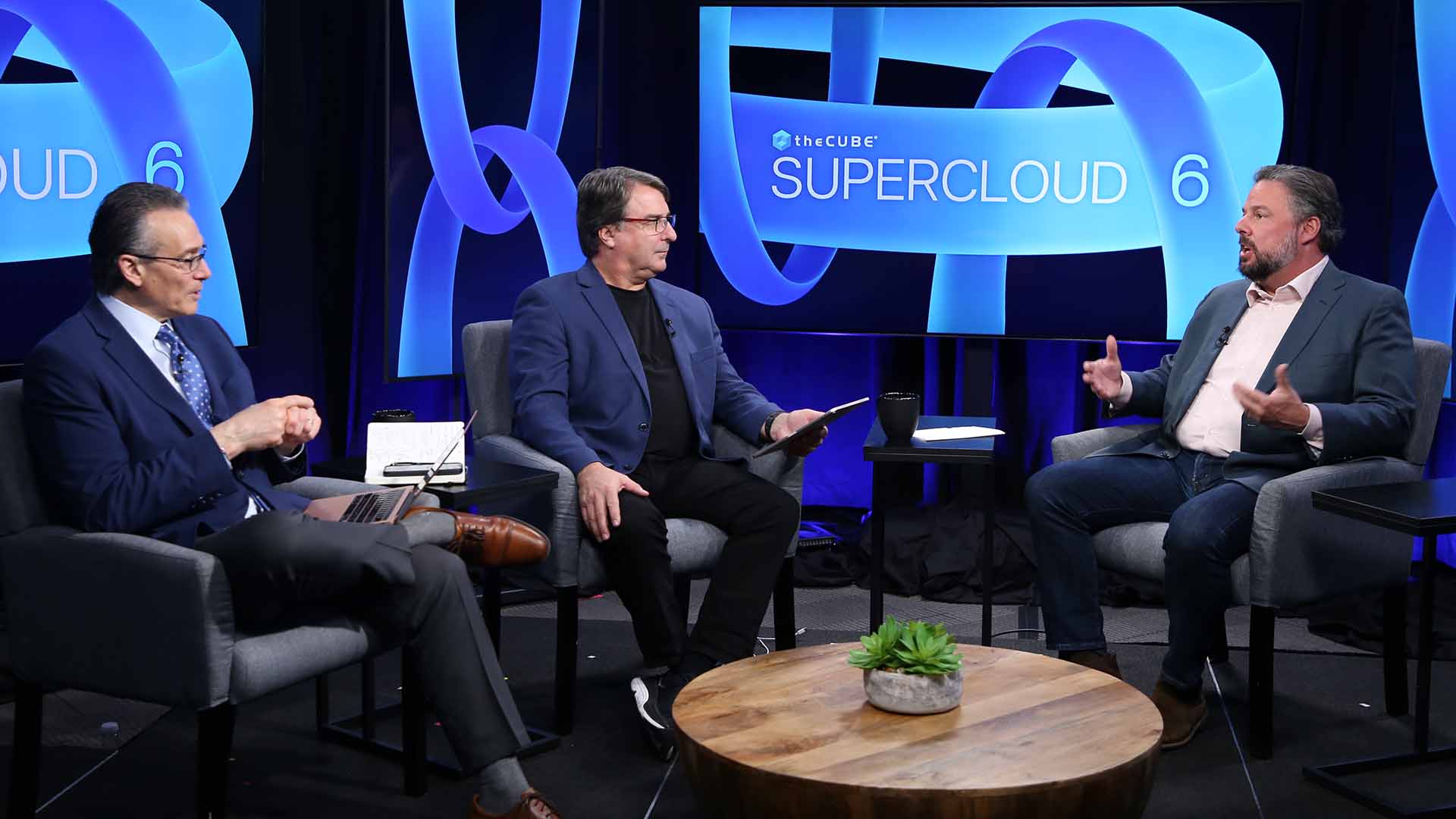 AI
AI
 AI
AI
 AI
AI
Artificial intelligence has been a hot topic since the introduction of ChatGPT in 2022, with AI innovation one of the areas at the forefront of the discussion coming out of the Supercloud 6 conference this week in Palo Alto, California.
From discussions on platform engineering to the convergence of cloud-native technologies and AI, theCUBE analysts took a look at some of the insights shared by industry leaders and stakeholders during the closing session at the “Supercloud 6: AI Innovators” event.
“There’s a long way to go, which says to me there’s a lot of room for innovation and that’s going to come from a [of] couple places,” Dave Vellante (pictured, left), chief analyst at theCUBE Research. “All these existing platforms that are evolving to catch the AI wave. Then you have all these new startups … and either they’re going to hit escape velocity or they’re going to get acquired or they’re going to be a niche.”
Vellante spoke with John Furrier (center), executive analyst, and Rob Strechay (right), principal analyst, at the “Supercloud 6: AI Innovators” event, during an exclusive broadcast on theCUBE, SiliconANGLE Media’s livestreaming studio. They discussed the ongoing evolution and potential for innovation within the AI sector, the integration of AI with cloud-native technologies, the importance of observability in AI systems and the role of platforms in democratizing AI development.
With topics ranging from platform engineering to DevSecOps and machine learning, the discussion underscored the dynamic nature of the field. The emergence of new teams focused on these areas reflects a shifting paradigm in how organizations approach AI innovation, according to Furrier.
“With KubeCon and that community of Kubernetes and cloud-native, AI has opened up a huge aperture for changing the definition of observability, increasing the role of cloud-native DevSecOps operators who are now running with the data engineering platform folks. They seem to be driving the change,” he said.
One notable aspect is the increasing emphasis on observability within AI systems. As the complexity of these systems grows, ensuring performance and availability becomes paramount. Platforms for observability, such as OpenSearch, are gaining traction, indicating a growing need for robust monitoring and management solutions.
“Last year when we were over there [at KubeCon EU], there wasn’t a lot of AI talk,” Strechay said. “But I think what’s interesting going into some of the discussions that I had … that there’s a lot going on in this ecosystem and there’s a lot around security, how you manage it and what the stack is going to look like and some observability stuff.”
The intersection of cloud-native technologies and AI, particularly within the Kubernetes community, was also of interest. The discussion on this focused around MLflow and Kubeflow and how AI is becoming increasingly integrated into cloud-native environments. The democratization of AI through organizations such as the Cloud Native Computing Foundation signifies a monumental shift in how AI is developed and deployed, according to Furrier.
“If this continues, like Nvidia, you’ll see the CNCF community probably take charge of the generative AI, because as we’ve been saying, the democratization of the data side is not going to be by the data scientist. It’s going to be by the AI itself,” he said.
Moreover, the proliferation of AI use cases underscores the expansive potential of the technology. From Nvidia’s perspective, the aperture of AI applications has widened significantly, leading to a surge in demand for AI-driven solutions. As the role of humans in AI development evolves, cloud-native platforms are poised to play a central role in scaling AI initiatives.
“You talk about things like microSHIFT and other smaller Kubernetes deployments and containers out at the edge where the data really doesn’t make sense to bring it all back,” Strechay said. “Doing inference out there and then bringing summarization back, I think that’s going to be a big story.”
Here’s the complete video interview, part of SiliconANGLE’s and theCUBE Research’s coverage of the “Supercloud 6: AI Innovators” event:
THANK YOU